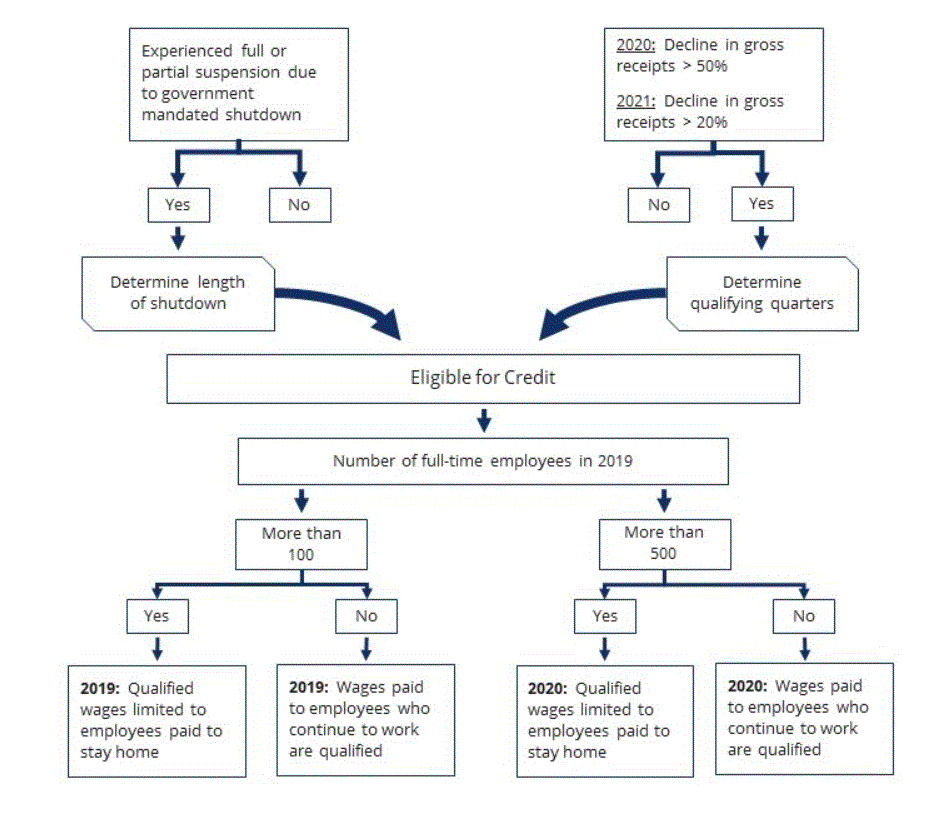The Employee Retention Credit (ERC) is a refundable payroll tax credit for up to $5,000 per employee in 2020 and $28,000 in 2021. This temporary credit was enacted by the Coronavirus Aid, Relief, and Economic Security (CARES) Act and amended by the Consolidated Appropriations Act of 2021 (CAA). On March 11, 2021, the American Rescue Plan Act (ARPA) of 2021 was signed, which further extended the credit through the remainder of 2021. In total, the potential per-employee payroll refundable credit for the combined 2020 and 2021 period is $33,000.
Based on our analysis of all ERC guidance (including the recent IRS Notice 2021-20 published on March 1, 2021 and the ARPA). Clergy Financial Resources has developed services to help you determine eligibility, calculate credit amounts, provide documentation to your payroll tax file, and support the tax position.
The ERC provides an incentive for churches to keep their workforce employed during the COVID-19 pandemic in the form of a payroll tax credit. The credit is fully refundable against the employer share of its Social Security tax. The ERC is based on wages, compensation, and qualified healthcare expenses paid by eligible employers (Qualified Wages) from March 13, 2020 through December 31, 2021.
Do you qualify?
Churches can claim the ERC if they’re experiencing a significant decline in gross receipts or a shutdown by government order. If a church qualifies under either scenario, the church can receive the ERC on a portion of Qualified Wages paid during qualified periods.
A decline in gross receipts is a mechanical computation. However, under certain facts and circumstances, qualifying for the credit under the mandated government shutdown can be a subjective exercise.
If your church was fully or partially suspended during a calendar quarter due to a governmental order is an eligible employer and is entitled to the ERC if it has a more than nominal impact. It’s important to note that qualified wages that are used to compute the amount of credit available can only relate to the period in which wages were used as aid during the time of economic hardship (i.e. the period in which the church was shut down). A government order can either be a federal, state, or local mandate.
Contact Clergy Financial Resources for more details on how your church may qualify.

< Back

Clergy Financial Resources serves as a resource for clients to help analyze the complexity of clergy tax law, church payroll & HR issues. Our professionals are committed to helping clients stay informed about tax news, developments and trends in various specialty areas.
This article is intended to provide readers with guidance in tax matters. The article does not constitute, and should not be treated as professional advice regarding the use of any particular tax technique. Every effort has been made to assure the accuracy of the information. Clergy Financial Resources and the author do not assume responsibility for any individual’s reliance upon the information provided in the article. Readers should independently verify all information before applying it to a particular fact situation, and should independently determine the impact of any particular tax planning technique. If you are seeking legal advice, you are encouraged to consult an attorney.
For more information or if you need additional assistance, please use the contact information below.
Clergy Financial Resources
11214 86th Avenue N.
Maple Grove, MN 55369
Tel: (888) 421-0101
Fax: (888) 876-5101
Email: clientservices@clergyfinancial.com
